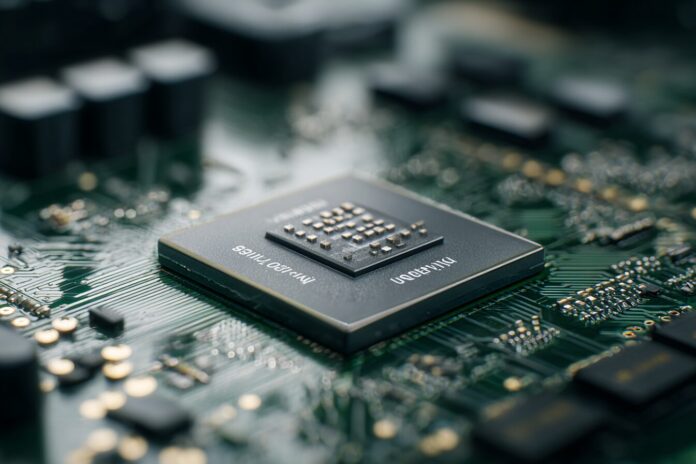The Surprise Leak That’s Shaking Up the AI PC Landscape
In a significant development for AI-powered personal computing, Nvidia’s upcoming N1X processor has emerged in fresh benchmarks, revealing a surprising detail: the same number of CUDA cores as the GeForce RTX 5070. This exciting revelation capitalizes on Nvidia’s continuous innovation, and most importantly, it signals a transformative era for integrated graphics. Because of its integrated design and energy-efficient target, the N1X stands as a potential game-changer in markets that demand both performance and reduced power consumption.
Furthermore, the leak highlights Nvidia’s ambition to bridge the technological gap between compact SoCs and dedicated GPUs. Transitioning from traditional graphics solutions, the N1X introduces a robust integrated solution that is expected to redefine standards in AI PCs. Besides that, this breakthrough also intensifies the ongoing discussion about the future of hybrid CPU-GPU architectures in personal computing.
Diving Deeper Into the Benchmark Results
The benchmark results, disclosed through a Geekbench OpenCL test, indicate that the N1X chip achieved an impressive score of 46,361. Because synthetic benchmarks provide an early glimpse into performance capabilities, these figures have captured the attention of industry experts and enthusiasts alike. The integrated GPU harnesses an incredible 6,144 CUDA cores spread over 48 Streaming Multiprocessors, which mirrors the anticipated configuration of the RTX 5070.
Moreover, detailed analysis from multiple tech sources, including insights from TechSpot and TweakTown, suggests that although the CUDA core count is identical, the overall chip architecture diverges in meaningful ways. Therefore, while raw numbers provoke excitement, the underlying engineering choices may dictate practical performance in various scenarios.
Comparing Nvidia N1X and the RTX 5070: Architecture and Design
Although the N1X and RTX 5070 share the same CUDA core count, the two chips are designed with entirely different applications in mind. Most importantly, the N1X is an Arm-based SoC integrating Nvidia’s Blackwell GPU architecture, making it especially suitable for AI-driven tasks and system-on-chip (SoC) environments. Because it is designed to operate with shared LPDDR5X memory rather than dedicated VRAM, it sets itself apart from the RTX 5070, which is built with 12GB of high-speed GDDR7 memory to ensure peak performance for gaming and professional graphics.
The differences extend further in terms of clock speeds and thermal dynamics. For instance, the N1X operates at a peak frequency of approximately 1.048 GHz, which contrasts sharply with the RTX 5070’s higher frequencies that can exceed 2.3 GHz under typical conditions. In addition, the N1X features a Thermal Design Power (TDP) of around 120W, whereas the RTX 5070 demands up to 250W for optimal performance. These distinctions underline that each chip is tailored for specific computing environments—one optimized for integrated solutions and the other for dedicated high-performance tasks.
Implications for AI-Powered PCs and Future Technologies
The N1X chip is not solely about matching gaming performance benchmarks; it is a clear indication of Nvidia’s broader vision for AI-powered computing. Because the chip integrates Arm CPU cores with Blackwell GPU cores, it is designed to expedite AI workloads, accelerate content creation, and empower ultra-thin laptops as well as next-generation desktops. Therefore, the merger of high-efficiency design and specialized AI capabilities may revolutionize product lines in both consumer and enterprise markets.
In addition, these design advancements dovetail with current trends across the tech industry. For example, the evolution of software like Microsoft Edge, which now incorporates an experimental ‘Copilot Mode’ for agentic AI web browsing, demonstrates the rising interest in merging hardware efficiency with intelligent software systems. For more on these shifts, readers can review insights from Windows Central. Most importantly, the interplay between advanced chips like the N1X and innovative software solutions is likely to redefine expectations from everyday computing devices.
Performance Expectations and Real-World Impact
While initial benchmarks for the N1X chip are impressive, it is critical to note that the results come from engineering samples. Because synthetic tests such as Geekbench provide limited insights, actual performance in real-world scenarios will be crucial. The N1X’s impact on gaming, AI inference, and professional applications will only be confirmed once retail models are evaluated by consumers and experts alike.
Besides that, the integrated design, which lacks dedicated VRAM, indicates that the chip may be better suited for tasks that favor efficiency over raw power. As a result, certain high-performance gaming applications may still favor the dedicated RTX 5070. However, for AI workloads, ultra-portable devices, and content creation environments, the N1X is poised to deliver a balanced performance that prioritizes power efficiency and innovative design.
Future Outlook and Industry Implications
Looking ahead, experts anticipate further leaks and detailed benchmarks as Nvidia moves closer to a full product reveal. Most importantly, the industry is keen to understand how Nvidia will balance power, efficiency, and advanced capabilities in the context of next-generation AI PCs. With competitors such as Intel, AMD, and Qualcomm also racing into the AI market, the coming months promise a dynamic shift in how integrated solutions are built and deployed.
Therefore, consumers and professionals alike are advised to keep a close eye on upcoming reports and demonstrations. The continuation of these developments, paired with complementary innovations like smarter web browsers and intelligent software, is set to increase competitive pressures and foster a broader transformation across the technology landscape.
References:
- Nvidia’s N1X consumer chip pops up in benchmark equalling core count of RTX 5070 – TechRadar
- Nvidia N1X AI PC chip leaks with the same number of CUDA cores as an RTX 5070 – TechSpot
- NVIDIA’s new N1X AI PC chip rumor: same GPU core count as RTX 5070 – TweakTown
- Microsoft Edge introduces AI-powered Copilot Mode – Windows Central



